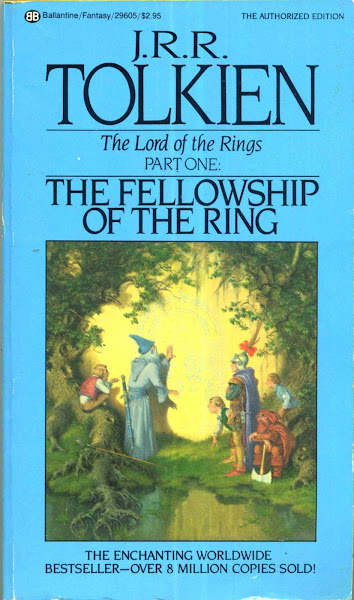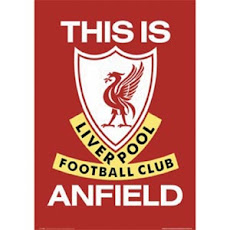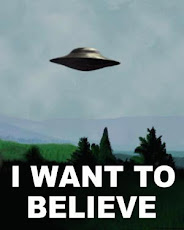The Last of the Blue and Whites
A story of the 1937-38 Ateneo Basketball Team
by rick olivares
Shostakovich’s Symphony No. 5 was like a salve for Fr. John McCarron S.J. The music played on heavy set RPMs was turned down low, but along with the light rain that fell that night, they did much to dispel the heat from the war clouds on the horizon.
 A Civil War was raging in Spain. The Soviet Union completed its Great Purge where almost 200,000 people were executed for harboring a bourgeoisie mind. But of great concern was Japan’s invasion of China, the first shots in a war that would engulf the whole of Asia in a few years time.
A Civil War was raging in Spain. The Soviet Union completed its Great Purge where almost 200,000 people were executed for harboring a bourgeoisie mind. But of great concern was Japan’s invasion of China, the first shots in a war that would engulf the whole of Asia in a few years time.
There were hopes and much prayers being said of the strife but for the moment, basketball was on the good Jesuit’s mind.
Fr. McCarron was a very precise man. Orderly to the point of being such a great stickler for detail. That is how the Society trained him and that was how he was going to apply his knowledge to his work.
He took out his diary and in clean and flawless strokes, he jotted down using brown ink, the order for the following day.
August 8, 1937. Opening of the NCAA.
Order of the Day
9:00 Prepare equipment for the game
Bring the balls and the doctor’s kit
Bring oranges, water, and ham and towels
10:00 Arrange for transportation and meals with Fr. (Anthony) Keane SJ
Pep Band should be at the venue by 230pm
Ateneo Seniors captain carries the flag – borrow this from the Boy Scouts!
A small boy dressed like the cheerleaders marches in with the Parade
3:00 Parade – Be prompt! Be prompt!
3:30 Game
Players say Hail Mary in locker room
Sit on bench with the players but do not talk to them. Let the coach do his job.
Keep track of the fouls of both teams.
Keep the Rule Book in your pocket just in case you need to glance at it.
7:00 Have truck in a definite place
Get players there
Get them home in relays
Check equipment
Collect uniforms and trunks. Bro. John washes towels and trunks but not the sweats.
He looked at his notes. There were hardly any scratches or deletions. Fr. McCarron knew his job and he didn’t make too many mistakes. Especially when it meant dealing with Fr. Keane, the Athletics Director who he shared a rather testy relationship. He sets policy – you carry it out, was his watchword.
Fr. John closed his diary, said his evening prayers, and retired for bed. It had been a long day. The Ateneo team made the 3-½ hour trip to Batangas that afternoon to play the Batangas High School Saxons in the last of their barnstorming tours. The team did that frequently in the old days as a means to raise funds for its program and to attract some of the best talent in the country.
A bus was chartered at Php 1.80 per man for a round trip and the staff and players cheerily sang songs and chatted during the long drive. When the Atenean delegation arrived, they had a mere 30 minutes to limber up and get acclimated to the dirt court in which they were to play in. The visitors handily beat the Saxons after which they had dinner at the house of an alumnus who organized the event.
By 645pm they made the trek back to Manila. Hardly anyone spoke on the way home as they preferred to stay lost in their thoughts and conserve energy for the big game on Sunday. The team arrived at Padre Faura at 10pm and the players immediately trooped back to the dorm. It was a long and tiring trip. And tomorrow was another long day.
They were then simply called, the Ateneo Seniors. Sports writers dubbed them the Blue and Whites. And their first foe in that 1937 season was from a school named after Ateneo’s most famous alumnus, Jose Rizal.
It was a long game marked by stingy defense and poor shooting. The Blues coached by former player Totoy Bautista and assisted by Tibing Martinez. The team was bannered by Cesar Basa, Bobby Jones, George York, Fermin Fernando nicknamed the Black Panther from Zamboanga, Dick Francisco, Rafael Roco, Simon LaO, Manuel Cuervo, Nene Rosales, Gil Del Mar, and Jess Arce, the team captain.
former player Totoy Bautista and assisted by Tibing Martinez. The team was bannered by Cesar Basa, Bobby Jones, George York, Fermin Fernando nicknamed the Black Panther from Zamboanga, Dick Francisco, Rafael Roco, Simon LaO, Manuel Cuervo, Nene Rosales, Gil Del Mar, and Jess Arce, the team captain.
Arce was graduating and he hoped to go out a winner. As a high school senior, he was already drafted to the senior team to play center. “He’s that talented and he can play any position,” succintly appraised Bautista of his prized ward.
With the game on the line, and Jose Rizal leading by a point 29-28, Bautista sued for time. In the meantime, the cheerleaders – Raul Manglapus, Luke Paredes, and Frankie Romualdez – egged on the gallery for a thunderous Fabilioh!
There were scant seconds left and the opponents sure to play man-to-man. Bautista called for the ball to be whipped around and whoever found himself open had to take the shot with no hesitation.
Upon resumption of play, Cuervo took the inbound from Fernando. He dribbled once and whipped the ball to Novales who found a cutting Manuel Conde. With the defense rotating towards the suddenly open guard, Conde flicked the ball to a wide-open Francisco who nailed the game winner with three seconds to go. Their defense held and Ateneo had its first win of the NCAA season.
It was a long but fruitful day and hopefully, noted Fr. McCarron, the season’s outcome would be the same one too.
The NCAA was a six-team league then after the departure of UP, UST, NU for the UAAP after disagreements over league policy. Yet nothing changed. Every game was white hot as the NCAA had become the country's premier basketball league.
Ateneo was the undisputed king of basketball while Mapua and La Salle lorded it over the pitch. A fact that rankled McCarron. Although from America’s East Coast, Fr. McCarron loved soccer. “Like it or not, Ateneo is not a football school. Basketball,” he finagled as the culprit. “has ruined it.”
While the Blue and Whites made hoops their own province, clawing at their jerseys was that school from Mendiola, San Beda. Letran and Jose Rizal rounded out the school roster.
The teams played a single round robin format and the top four teams advanced to the championship round in another single round robin affair. The squad with the most wins was to be crowned the champion. In the event of a tie, a championship match was to be played.
The Ateneans were deep and talented and promised to be for many years to come after all, they were only losing Arce and York, the expat Los Angelino who was a deadshot from the outside.
The two-headed monster of Bautista and Martinez gave them an unmatched brain trust. They were chosen for their ability to work with the boys and teach them the rudiments of the sport. "In union, there is strength," as Fr. Keane would say.
Ateneo then whitewashed in succession Letran 26-20 and La Salle 37-33 before falling to San Beda 25-27.
It was the Bedans who put an end to Ateneo’s string of three straight titles with a three-peat of their own. And if there was anything the Padre Faurans wanted to do it was to prevent their rival from a fourth straight crown.
“We’ll get them next time,” promised Martinez who managed to steel his emotions.
With fire in their eyes, Ateneo made short work of Mapua 46-33 and entered the championship round along with San Beda, Letran, and Jose Rizal. In their first assignment, the boys in blue got their revenge on the red shirts with a 21-16 win. The Bedans were crushed as the Padre Faurans were jubilant. They stopped the big red machine and they now hoped to embark on another run of their own.
Foe #2 was Letran who provided no further opposition as Arce, Fernando, and Basa punctured the hoop with impunity. But as prolific as Ateneo’s offense was, a little known part of their game was Bobby Jones. He was a harbinger for today’s defensive specialists. Matched up versus opponents’ leading scorer, Jones with his rare athleticism put the clamps on them then knock down a set shot of his own.
At 2-0 in the championship round, Ateneo found themselves playing their first opponent of the season only this time it was for the 1937 NCAA title. Earlier, Jose Rizal had put the fear of God into the team and it took a game winner from Francisco to bail them out. And on Thursday, September 30, figured to be no different.
And for the most part of the game, the Blue and Whites found themselves in familiar dire straits as JRC spotted them an early lead.
Enter some old ready and willing hands.
Former cheerleader Leon Ma. Guerrero tapped his former bleachers colleague Elpi Cuna and said, “Hey, Cuna. How about we help those cheerleaders (Mangalpus, Romualdez, and Paredes)?
They held a huddle with the current Ateneo megaphones and after they broke, Paredes, addressed the gallery and thundered, “Fabilioh! Everybody ready…”
The cascade of cheers gave the team an adrenaline shot and just like that, Ateneo found the range and raced to a 40-26 victory and the school’s fifth seniors basketball title. And Coach Bautista, pre-dating Arnold “Red” Auerbach by a couple of decades, lit his victory cigar.
and raced to a 40-26 victory and the school’s fifth seniors basketball title. And Coach Bautista, pre-dating Arnold “Red” Auerbach by a couple of decades, lit his victory cigar.
A few days later, the Juniors squad scuttled La Salle 17-16 through the exploits of Tony Montenegro and Jess Coruna. The Ateneo celebrated with a torchlight parade that passed through Dakota, Herran, and back to Padre Faura.
Classes were called off the following Monday as a banquet was held in honor of the victorious teams. Sun Studio, contacted by Fr. McCarron, charged .30 cents for every team picture taken but no one seemed to mind. The championship was worth its weight in gold.
As for Fr. John McCarron, the following day, he busied himself with the logistics for a trip to Baguio; the school’s treat for its victorious team. He noted in his diary what to pack, the details of a stopover at San Fernando, Bulacan where the team would play a pick up game, and their board, lodging, and transportation in the City of Pines.
It was a long season and at the end of it all, he scribbled in his fine elegant script, “Victory.” And he closed his diary and prepared for the long day ahead.
Post Script:
The following year, the Ateneo Seniors or the Blue and Whites became known as “the Blue Eagles.” The were beaten by Letran in the title game. The following year, Ateneo lost to La Salle in the championship in what was the opening salvo of Philippine basketball’s longest and most enduring rivalry.
Simon LaO also played for the Ateneo football team and scored the winning goal against La Salle on December 7, 1941. But the team wasn't able to celebrate because the following day, Japan began bombing the Philippines. The war clouds that first appeared in China had appeared over the archipelago.
Cesar Basa was killed in 1941 while fighting off the Japanese in his antiquated bi-plane. Basa Air Base in Batangas is named after him.
Fermin Fernando survived the Death March but passed away while in detention at Capas, Tarlac.
Rafael Roco later coached the Blue Eagles to back-to-back titles in the 1950’s with players like Bobby Littaua, Ed Ocampo, Cris Arroyo, and Jimmy Pestano. He is also the father of actor and Atenean Bembol Roco.
Author’s Note:
This is the fourth piece I’ve written about the Ateneo teams of yesteryear. I’ve always been fascinated by that era. It was really such a simple yet altogether difficult time. As you can see, the team traveled to Batangas to play a day before the NCAA Opening. Travel and roads weren’t as developed back then and you can be sure they were banged up from that trip. And the following day, they beat Jose Rizal albeit with a game winning shot – an incredible portrait of hardy men.
And they celebrated the title run with a trip to Baguio. Nowadays, teams are rewarded with a trip to America, Hong Kong, or Boracay. Imagine! The game tickets cost .10 cents. Seriously.
I’m extremely grateful for these teams, Jesuits, and coaches who blazed a trail for us all. And they started much of that school pride we stand for. Here’s giving those men their due.
Animo Ateneo!












Basa Airbase is in Pampanga. Lipa has Fernando Airbase
ReplyDeleteHi Mr Olivares. Do you mind sending me a picture of that team? I am the son of Rafael Roco. Can’t distinguish which one he is on that team picture.
ReplyDeleteThanks,
Carlos Roco
Itosroco@yahoo.com